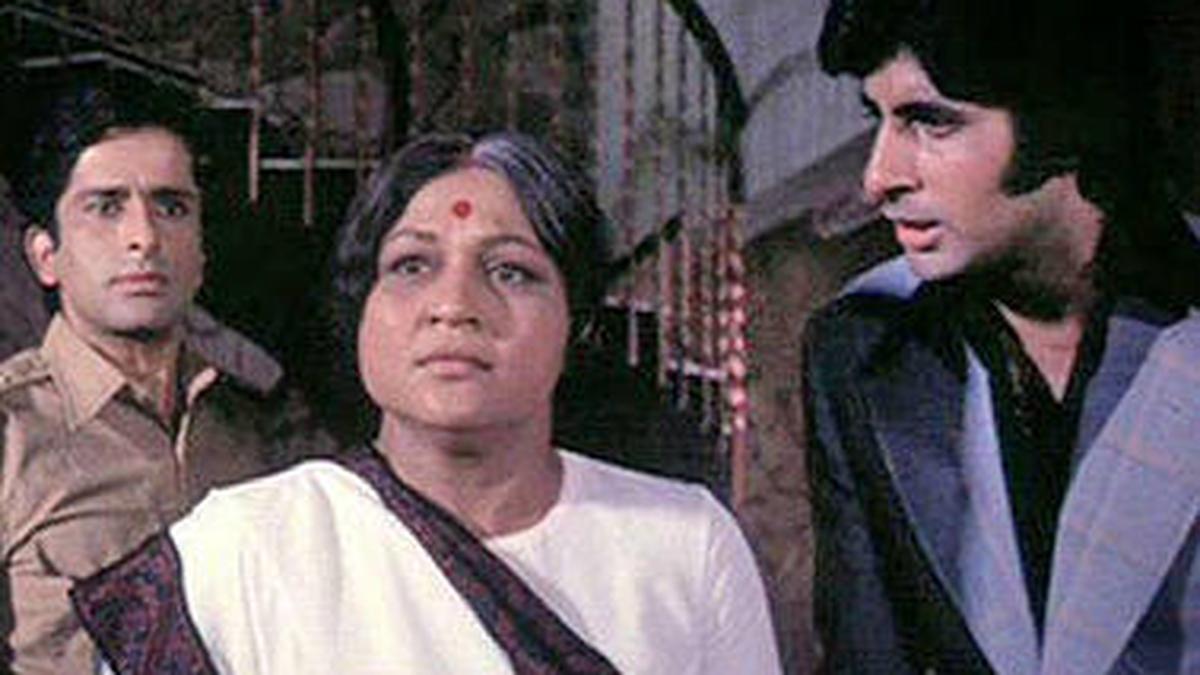Once during a conversation, I asked Javed Akhtar about the meaning of Vijay’s return to his mother’s lap in the climactic scene of Deewaar. He said the text he wrote with Salim Khan is open to interpretation — “Did he return to the mother because of his ideology or his emotion is still debatable. After all, the mother also goes to the temple to see her defiant son, after he is shot at by her younger son, the upholder of law. It is also some kind of acceptance.”
Some scripts are not cast in stone. Deewaar is one of them. Fifty years after the film shook the conscience of a nation by putting an end to Nehruvian romanticism, its ideas, myth and symbolism continue to speak to us. The conflict hasn’t aged, and the emotional tapestry hasn’t worn out. The capitalist designs to destroy workers’ unity that Anand Babu (Satyan Kappu) seeks to expose are almost complete. Choosing between family and revolution has proven to be a zero-sum game.
The road from the temple still bifurcates into opposing directions and the wall that sprung up between the brothers still stands tall. In fact, new bricks are being added and the scope of windows is being scuttled.
What’s different and, perhaps, dangerous is that the bridge under which the two brothers met to resolve their differences is no longer in harness. The ambivalence of the mother (Nirupa Roy), the symbol of idealism, social mores and multiple perspectives is no longer there. Ravi (Shashi Kapoor) might lose the argument today and, perhaps, his existence too, for the mother has switched to Vijay’s side as we have noticed in the film’s new-age iterations such as KGF and Pushpa.
Such is the power of Salim-Javed’s screenplay that its dramatic transitions still keep you hooked. The characters are something we care about and root for, even five decades after the film’s release. One can find traces of The Public Enemy, Mother India and Gunga Jumna in the structure of Deewaar, but the master storytellers wove the plot points from several sources to create an innovative picture of the urban flux.
Deewar released on the cusp of Emergency, when director Yash Chopra was not blindsided by chiffon romance and was keen on filming what was simmering beneath the ground. Produced by Gulshan Rai, it was the second film that Chopra directed outside his own or brother B.R. Chopra’s banner, and showed his craft in mapping a socio-political commentary in a slick, urbane mould.
Beyond the brooding anti-establishment tone, the film makes a statement on the system where the degree of corruption counts. When Ravi shoots at a teenager, only to find he is stealing a loaf of bread because his family is hungry, he goes to his house to offer some food. The boy’s mother lashes out at his largesse and the state of affairs where the big crooks go scot-free while a young boy is shot at for stealing a few crumbs. In comes the teacher-father (A.K. Hangal). He silences his wife and says it is about the intent, not the amount.
The strand provides Ravi with moral heft to counter his brother’s transgressions in the narrative is dotted with politics of signature. It is a signature that brings down Anand Babu’s image in the eyes of his followers. The tattoo society puts on Vijay’s arm that makes him an outcast for life too is a signature. Vijay buys the same building where his mother worked as a labourer during his childhood. He desperately tries to regain lost self-respect.
However, keeping the Gandhian spirit alive, the film puts the means over ends. When Vijay asks Ravi to bring the signatures of those who made him an outcast, the mother reminds him that those who let him down were not family.
Deewaar started an era where dialogues and action blocks became more important than songs, and MB Shetty’s choreography of fight sequences was a big draw. In the iconic fight sequence in a godown, when Amitabh Bachchan, dressed in a knotted shirt, puts his head under a tap, it established him as the angry young man for posterity. The idea has inspired several filmmakers since — the latest tribute was in Paatal Lok-2.
Amitabh’s monologue with God has become part of folklore. Those who grew up in the 1980s would remember waking up to LP discs playing ‘Mera paas maa hai’. When a young Vijay doesn’t take the money thrown at him, Davar (Iftekhar) says, “Yeh lambi race ka ghoda hai…”. The lines proved prophetic, not just for Vijay but also for Bachchan.
R.D. Burman’s music, M.A. Shaikh’s sound design and Sahir Ludhianvi’s verses kept us on the edge. Kishore Kumar’s ‘Keh doon tumhe’ continues to be on the playlist of DJs and listeners, but I can’t get enough of ‘I’m Falling in Love with a Stranger’. Sensuously rendered by Ursula Vaz, it defined Vijay — an outsider trying to fit in.
Published – February 14, 2025 10:59 am IST

